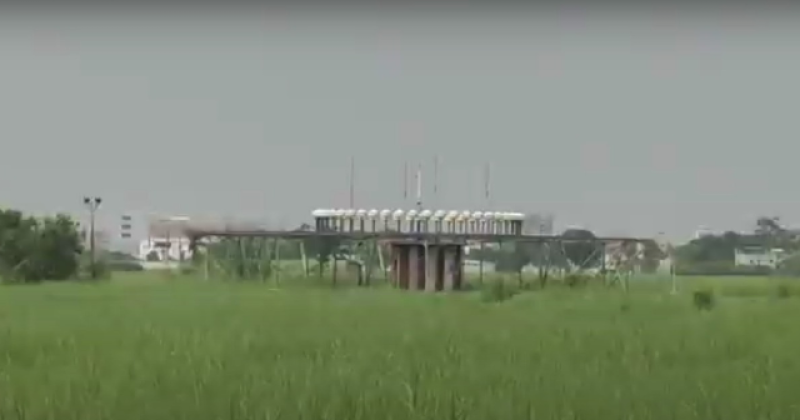- CA Yunus pays homage to Liberation War martyrs on Victory Day |
- Bangladesh capital market extends losing streak for second day |
- Bangladesh celebrates Victory Day Tuesday |
- 'Different govts presented history based on their own ideologies': JU VC |
Will Cumilla’s long abandoned airport surge back to life

The long abandoned Cumilla Airport has turned into a grazing ground. UNB
By Khairul Ahsan Manik
Cumilla, May 2 – Beneath the overgrown grass and cracked tarmac of Cumilla’s abandoned airport lies a forgotten legacy—a once-thriving airfield that served the skies during the turbulence of World War II, now reduced to a training ground for drivers and a dilapidated road.
For nearly five decades, the hum of aircraft engines has remained stopped by the sighs of missed opportunities and administrative apathy.
Once bustling with activity, Cumilla Airport has remained neglected, its future grounded not by lack of potential, but by the reluctance of the authorities to invest in its revival.
And yet, in the wind that whispers across its empty runway, there is renewed hope.
Civic leaders and business elites are uniting their voices, calling for the long-awaited reactivation of the airport—a move they say will ignite economic growth and draw much-needed foreign investment to the region.
The story of this forgotten hub dates back to 1940, when the airport was constructed near Neura-Dhulipara as a military base during World War II. It faithfully served both military and civilian domestic flights until 1976. The army primarily operated it until 1966.
Thereafter, it was opened to the public for 10 short years before falling into silence.
Though passenger and cargo flights ceased long ago, the airport is far from obsolete. It continues to function as a vital signal relay station for international aviation, guiding 25–30 flights daily—most notably on Indian domestic routes and those heading to Agartala, Bangkok, and Singapore.
For this service, it earns a respectable Tk 30 to 40 lakh in monthly revenue.
Despite its faded glory, airport officials believe that only a modest investment—approximately Tk 30 crore—could bring life back to the runway.
Cumilla Airport was originally established on 210 acres of land.
In 1999, 103 acres were handed over for the Cumilla Export Processing Zone (EPZ), leaving the airport with 77 acres, much of which now lies fallow.
A private cattle farm grazes across a section of the property and the airstrip has slowly been reclaimed by nature.
The airport’s jurisdiction now spans several localities under the Cumilla City Corporation—Neura, Dhulipara, Rajapara, Unaisar, Dishaband, and Rasulpur.
Roads once built for aircraft now serve the daily commute of city residents.
Yet the bones of the airport remain intact. A skeleton staff of 22, including two officers, still watch over its quiet halls.
The terminal stands still, the air traffic control tower dormant.
What’s needed, officials say, is runway carpeting, fire services activation, and recruitment of skilled personnel.
“Just a small investment could bring this airport back to life,” said Nasir Uddin Ahmed, Communication Networking Engineer at Cumilla Airport.
“If the government prioritises it, reopening the airport won’t take long," he said.
His optimism is shared by many in Cumilla’s business community.
Jamal Ahmed, Vice President of the Cumilla Chamber of Commerce and Industry, sees the airport as a potential lifeline for industrial growth.
“The airport’s reopening would make travel easier for foreign investors, leading to job creation for thousands. We urgently need the airport to be operational for the growth of Cumilla’s industrial sector," he said.
Md Firoz Khandaker, Managing Director of Khandaker Food Industries in Cumilla BSCIC added, “We currently export products like vermicelli to Malaysia and India’s Assam. Soon, we plan to expand to Saudi Arabia and Dubai. If the airport was open, buyers could visit easily, and we could ship urgent goods by air.”
Beyond industry, the airport carries emotional and practical value for the local population. With one of the highest numbers of expatriates in the country, Cumilla’s need for a functioning domestic airport is both real and pressing, said Ahmed Shoeb Sohel, General Secretary of Comilla Club.
“There is a strong demand for domestic flights and this airport could serve that need while boosting foreign investment." A sleeping runway awaits its revival.- UNB

